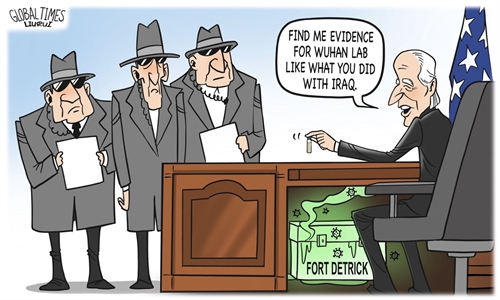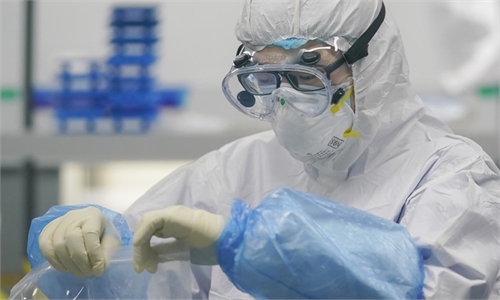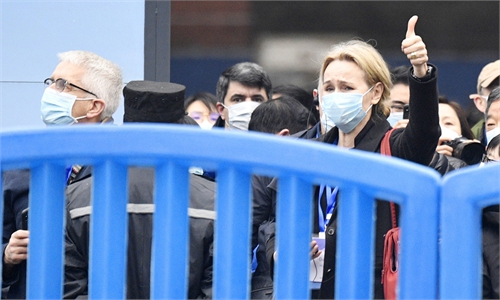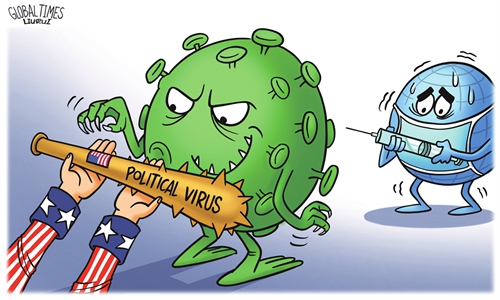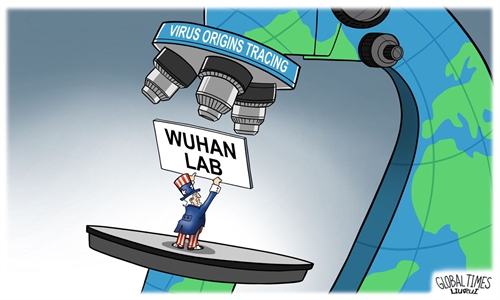Coronavirus origins: science vs. politics
More intl scientists reject ‘lab leak’ conspiracy as Biden’s 90-day probe deadline looms
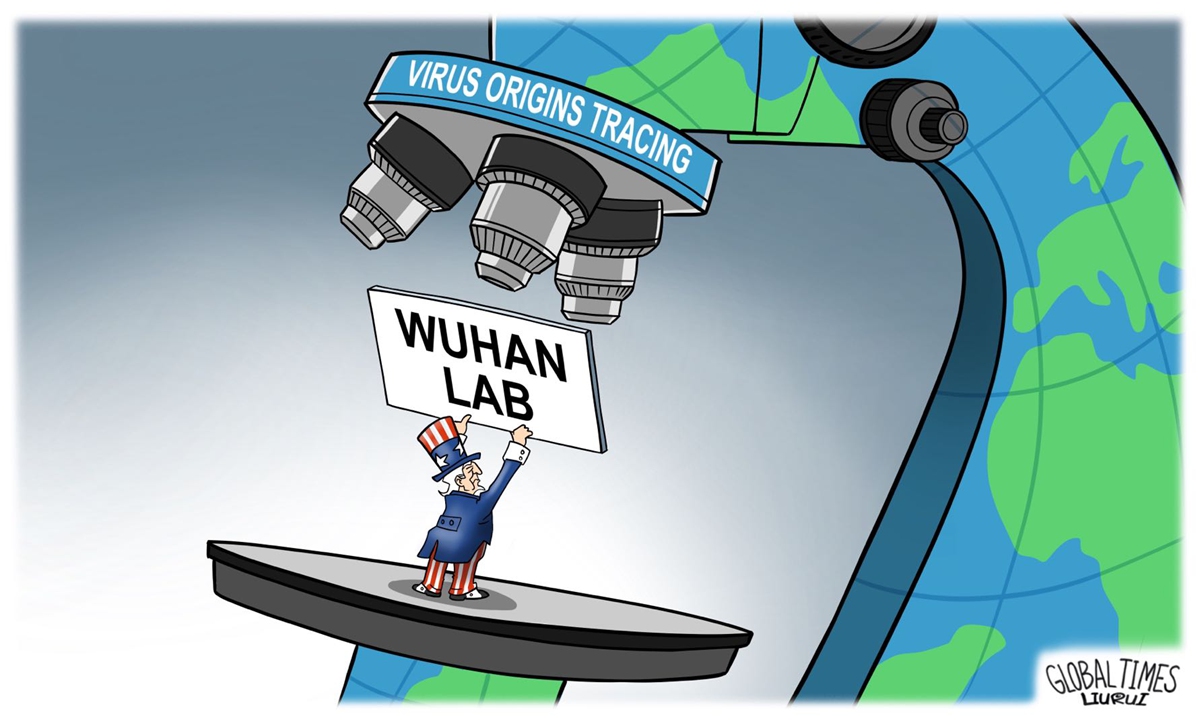
Will Uncle Sam be able to continue deceiving the world in terms of investigation into COVID-19 origins?
Although the US government has been coercing global scientists lately and pushing forward the lab leak hypothesis as its intelligence community-led 90-day origins probe deadline looms, more scientists spoke out in rejecting the conspiracy without yielding to mounting political pressure and continuing on their scientific path.
The latest efforts came from 21 scientists from countries such as Australia, UK, the US and Canada who concluded that "there is currently no evidence that "SARS-CoV-2 has a laboratory origin," according to a recent review published on the peer-reviewed journal Cell Wednesday. There is no evidence that any early cases had any connection to the Wuhan Institute of Virology (WIV), in contrast to the clear epidemiological links to animal markets in Wuhan, nor evidence that the WIV possessed or worked on a progenitor of SAS-CoV-2 prior to the pandemic, the review said.
David L. Robertson, a professor at MRC-University of Glasgow Centre for Virus Research, told the Global Times in an earlier interview that "there's categorically no evidence that the SARS-CoV-2 was created in a Wuhan lab or escaped from one."
Robertson, who recently took part in another paper titled "The animal origin of SARS-CoV-2," published on Science, was also one of the authors of the review on Cell.
The topic of virus origins has become "so politicized" and it is important to make sure the right investigations are prioritized. For example, the scientists follow the evidence where it leads and don't get caught up scapegoating individuals or institutions based on hypothetical scenarios, the scientist noted.
Angela Rasmussen, another co-author of the review article, said in a recent post that there's not a shred of evidence that SARS-CoV-2 or a closely related progenitor was ever at WIV. "All the speculation otherwise is basically a variation of 'the Chinese government lies about some things, so let's assume they are lying about this too, with zero evidence,'" she said.
The lab-leak theory was first pushed by then-US president Donald Trump in the spring of 2020 when some senior officials from the Trump administration strongly implied that the coronavirus escaped from a lab in Wuhan, where China's first domestic COVID-19 case was reported, as part of the Trump administration's concerted efforts to crack down on China. While largely keeping a confrontational line against China, the successor of Trump - Joe Biden - renewed the call for origins probe in May.
In an attempt to further pressure China, the US government has been turning the quest for investigating the origins of SARS-CoV-2 into a heated political battle in the past year. Though it has become increasingly challenging for scientists around the world to continue their work, the political wrestling did not stop them choosing the correct path.
Science vs. politics
The review on Cell was unveiled as the US media continued to scrutinize on the WIV, claiming that Biden administration officials are digging through genetic data which would be key evidence to uncover the origins of SARS-CoV-2, and Republicans insisted that the virus was "indeed" leaked from the Wuhan lab.
It was not the first time that the US government and media outlets turned the blind eye toward scientific evidence and the continuing search for the origins of the SARS-CoV-2, ignoring shared voices of the global scientists that reject the lab leak theory.
Rumors about the WIV first circulated on the internet at the early stage of the outbreak, such as a certain researcher was patient zero, the military took over the lab, and so on. "We've made clarification one after another. Still, those with ulterior motives continued spreading them, which severely interfered with the scientific work and global cooperation," Yuan Zhiming, director of the Wuhan National Biosafety Laboratory in the WIV, said at a recent media briefing in Beijing.
In echoing the lab leak narrative, US media outlets like the Wall Street Journal often hyped cases of miners' illness in Southwest China's Yunnan in 2012 and sick staff at the WIV, which have also been repeatedly refuted and clarified by the lab and scientists around the world. The WSJ report claimed the RaTG13 was discovered as several miners in Yunnan died in 2012.
The virus called RaTG13, which shares the highest average genetic similarity to SARS-CoV-2, is a viral sequence extracted from the biological samples collected from Mojiang in Yunnan in 2013. It has nothing to do with the blood samples of the miners found in 2012, Yuan said at the briefing. And in the review on Cell, scientists further explained that under any lab-leak scenario SARS-CoV-2 would have to be present in a laboratory prior to the pandemic. Yet no evidence exists to support such a notion and no sequence has been identified that could have served as a precursor.
There's no evidence that any virus resembling SARS-CoV-2 was ever at WIV, Rasmussen said in a tweet. "And for any laboratory origin hypothesis to be true, they had to have the actual virus. If you don't have the virus, it can't leak out of your lab," she noted.
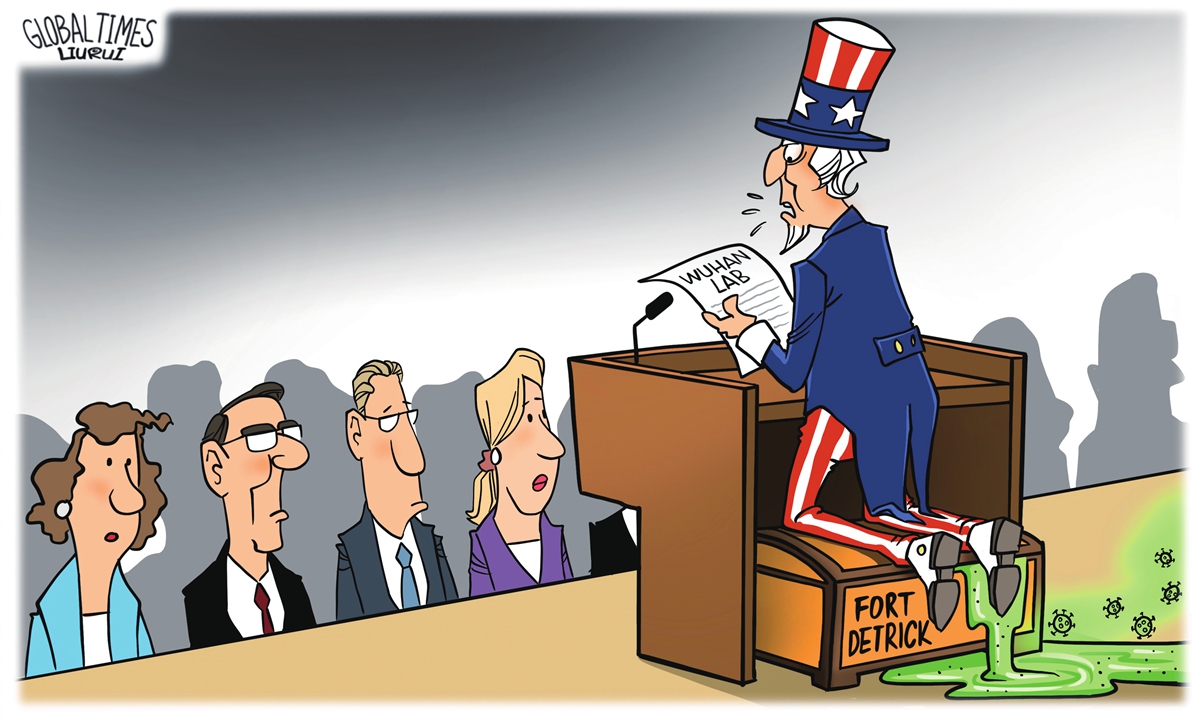
Origin-tracing. Illustration: Liu Rui/GT
Call for collaboration
As Biden approaches his deadline for intelligence agencies to hand over reports on the origins of the virus, the Global Times recently learned from sources that US intelligence agencies are stepping up their efforts to compile a report, but are struggling to find concrete proof to support the "lab leak" theory. And even its own research institutions and allies believe the virus was almost certainly not created artificially.
Meanwhile, the Biden administration has been redoubling efforts to manipulate US media outlets to cooperate with its intelligence's investigation on COVID-19 origins targeting China and create a favorable public opinion atmosphere to discredit and blame China on the issue. By feeding the US media false information to echo "China lab leak theory" narratives, such plot of framing China as the source of the SARS-CoV-2 is expected to help the Biden administration achieving its goal of confrontation with China.
The Global Times learned previously that prominent US scientists focused on the tracing of COVID-19 origins have been facing tremendous political pressure, and some have been sidelined for not yielding to politician-driven conspiracy theories on the matter, and many have received anonymous threats.
Still, they urged that science, not speculation, is essential to determine how the virus that triggered the COVID-19 pandemic reached humans, reiterating that the virus most likely originated in nature and not in a laboratory and they refuted the US-led "lab-leak" theory that put some prominent epidemiologists in a difficult situation, according to an open letter in July in the Lancet.
In this context, accusations and counter-accusations are particularly unhelpful, and the process of finding the origins of the SARS-CoV-2 must be collaborative and fully transparent, Jonathan Stoye, senior group leader at Britain's Francis Crick Institute, told the Global Times in a recent interview.
"Perhaps this is a little naive, but I truly believe we must set aside any political or cultural differences in order to understand this question for the benefit of the entire population of the world," he said.
